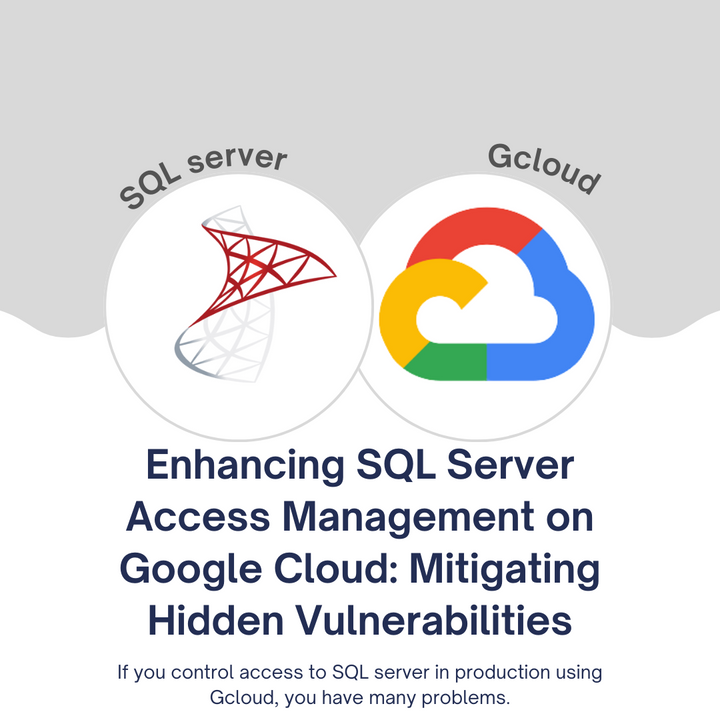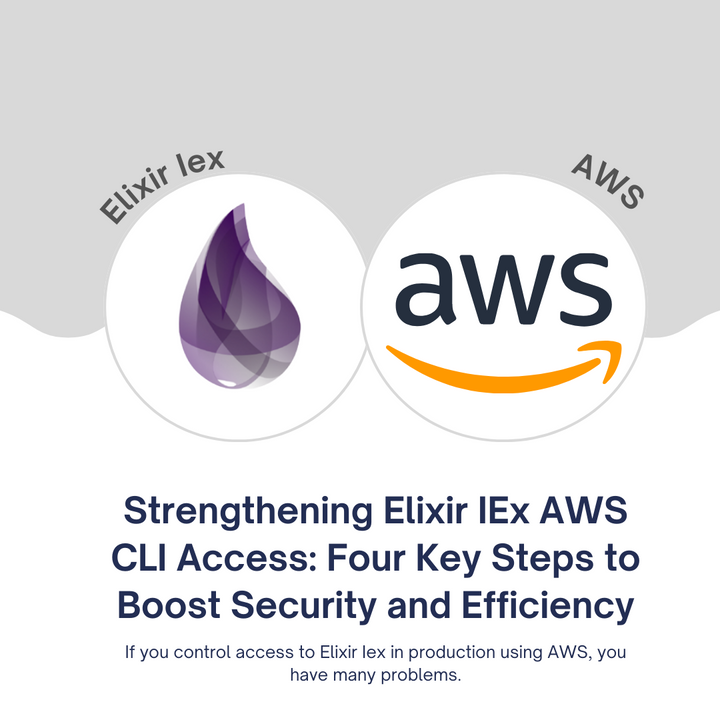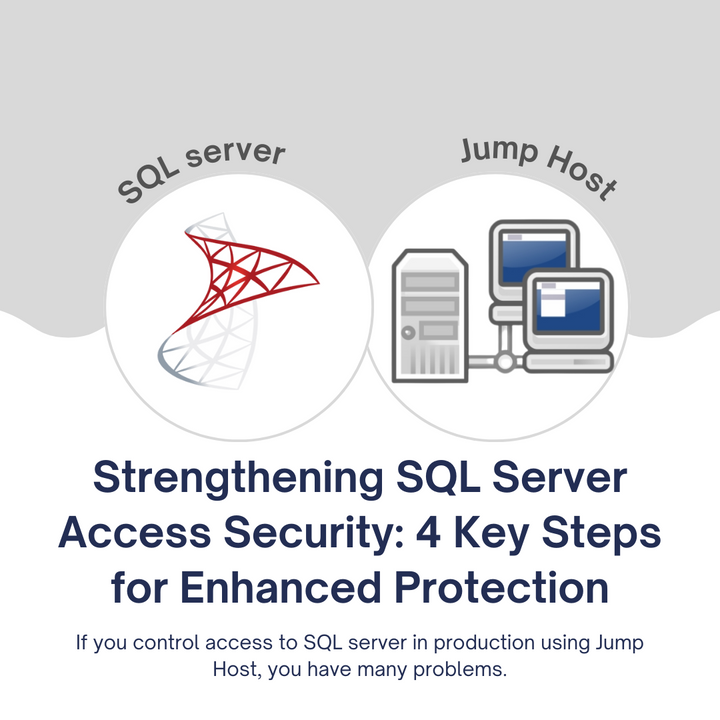Resources for Database Security
The reason most businesses fall victim to data breaches is because they underestimate the importance of robust database security measures. This happens because many are unaware of the various threats and vulnerabilities that can compromise their data, ultimately leading to significant financial and reputational damage.
In this post, we're going to walk you through essential resources for securing your database. We'll cover:
- Understanding the Basics of Database Security
- Access Control and Authentication
- Regular Patch Management
- Data Encryption at Rest and in Transit
- Backup and Disaster Recovery Plans
- Employee Training and Awareness
- Database Monitoring and Intrusion Detection
- Compliance and Regulations
- Security Audits and Penetration Testing
- Choosing the Right Security Tools and Providers
Implementing these measures will help you safeguard your data, maintain customer trust, and avoid costly data breaches.
Understanding the Basics of Database Security
Database security is the foundation of safeguarding sensitive information in the digital age. The importance of this cannot be overstated, as it ensures the confidentiality, integrity, and availability of data. According to Verizon's 2020 Data Breach Investigations Report, 86% of data breaches are financially motivated. Protecting data integrity builds trust with customers and partners, safeguarding your business's reputation. One common mistake is neglecting to apply encryption to sensitive data, leaving it vulnerable to breaches. To mitigate this risk, implement strong encryption protocols for all sensitive database information. For instance, banking institutions use encryption to secure customer financial data, preventing unauthorized access. The takeaway here is that encryption is the first line of defense against data breaches.
Access Control and Authentication
Controlling who has access to your database is vital for security. It prevents unauthorized users from altering or viewing sensitive data. According to IBM, insider threats account for 34% of data breaches. Effective access control not only protects data from external threats but also internal ones. One major mistake is using weak or default passwords for database access. To address this issue, enforce strong password policies and implement multi-factor authentication. Social media platforms use multi-factor authentication to secure user accounts. The key takeaway is that effective access control mitigates the risk of insider threats.
Regular Patch Management
Keeping your database software up to date is crucial for security. Regular patching fixes vulnerabilities that could be exploited by attackers. The Equifax breach in 2017 occurred due to an unpatched software vulnerability. Timely patching reduces the attack surface and the risk of data breaches. Neglecting or ignoring critical software updates is a common mistake. The actionable tip here is to establish a regular patch management schedule for your database. For example, operating systems regularly release security patches to protect against emerging threats. The takeaway is that timely patching is essential to database security.
Data Encryption at Rest and in Transit
Encryption is your shield against eavesdropping and data theft. It protects data as it's transmitted and when it's stored. McAfee reports that 40% of organizations have experienced a data breach involving encryption keys. The benefit is that encryption ensures data remains confidential, even if attackers gain access. The mistake to avoid is storing unencrypted data in databases or transferring data without encryption. Use SSL/TLS for data in transit and encryption algorithms for data at rest. E-commerce websites, for instance, encrypt customer payment data during transactions. The takeaway is that data encryption is essential for safeguarding information.
Backup and Disaster Recovery Plans
Preparing for worst-case scenarios is key to data protection. It allows for data recovery in case of accidental deletion, hardware failure, or cyberattacks. According to FEMA, 40-60% of small businesses never reopen after a disaster. Ensuring business continuity and data integrity is the benefit of backup and disaster recovery plans. The mistake is failing to regularly test and update these plans. To address this, establish automated backup routines and perform regular recovery tests. Hospitals use backup systems to secure patient records, guaranteeing continuous care in emergencies. The takeaway is that disaster recovery plans are your safety net in times of crisis.
Employee Training and Awareness
People are often the weakest link in database security. Educated employees are less likely to fall for phishing attacks or misuse data. According to IBM's Cyber Security Intelligence Index, 95% of all security incidents involve human error. Well-informed employees are your first line of defense. The mistake to avoid is neglecting employee training on security best practices. To fix this, conduct regular security awareness training sessions for all staff. Companies simulate phishing attacks to assess and improve their employees' responses. The takeaway is that well-informed employees are your first line of defense.
Database Monitoring and Intrusion Detection
Proactive monitoring can help detect and prevent security breaches. It identifies unusual behavior or unauthorized access in real time. The Ponemon Institute's 2020 Cost of a Data Breach Report states that the average time to identify a data breach is 207 days. Early detection can prevent data breaches. The mistake to avoid is failing to implement intrusion detection systems or monitoring tools. To rectify this, invest in intrusion detection systems and regularly review access logs. Security teams use intrusion detection systems to spot and block malicious activities. The takeaway is that early detection can prevent data breaches.
Compliance and Regulations
Staying compliant with data protection regulations is not optional. Failure to comply can result in legal consequences and reputational damage. GDPR fines can reach up to €20 million or 4% of the company's global annual revenue. Compliance demonstrates a commitment to data security and legal responsibility. Ignoring or misunderstanding data protection regulations applicable to your industry is a common mistake. To address this, stay informed about relevant regulations and ensure compliance. Healthcare organizations must comply with HIPAA to protect patient data. The takeaway is that compliance is a non-negotiable aspect of database security.
Security Audits and Penetration Testing
Regular audits and penetration tests help identify vulnerabilities. They uncover weaknesses before malicious actors can exploit them. The State of Cybersecurity 2020 report reveals that 76% of organizations have suffered a security breach in the past year. Regular testing is crucial to uncover and address vulnerabilities. Neglecting to conduct regular security audits and penetration tests is a common mistake. To mitigate this, schedule periodic security audits and penetration tests. For instance, financial institutions hire ethical hackers to perform penetration tests to assess their security. The takeaway is that regular testing is crucial to uncover and address vulnerabilities.
Choosing the Right Security Tools and Providers
Selecting the right tools and partners is paramount for effective security. The quality of your security tools and providers directly impacts your database's protection. Gartner's Magic Quadrant for Security Information and Event Management (SIEM) reports reveal the top SIEM solutions. High-quality tools and providers are the backbone of strong database security.
In conclusion, securing your database is not an option but a necessity in the digital age. Implementing these ten resources will fortify your defenses, protect your data, and maintain your reputation. Stay informed, be proactive, and make security a priority to ensure your business thrives in an increasingly dangerous digital landscape.



